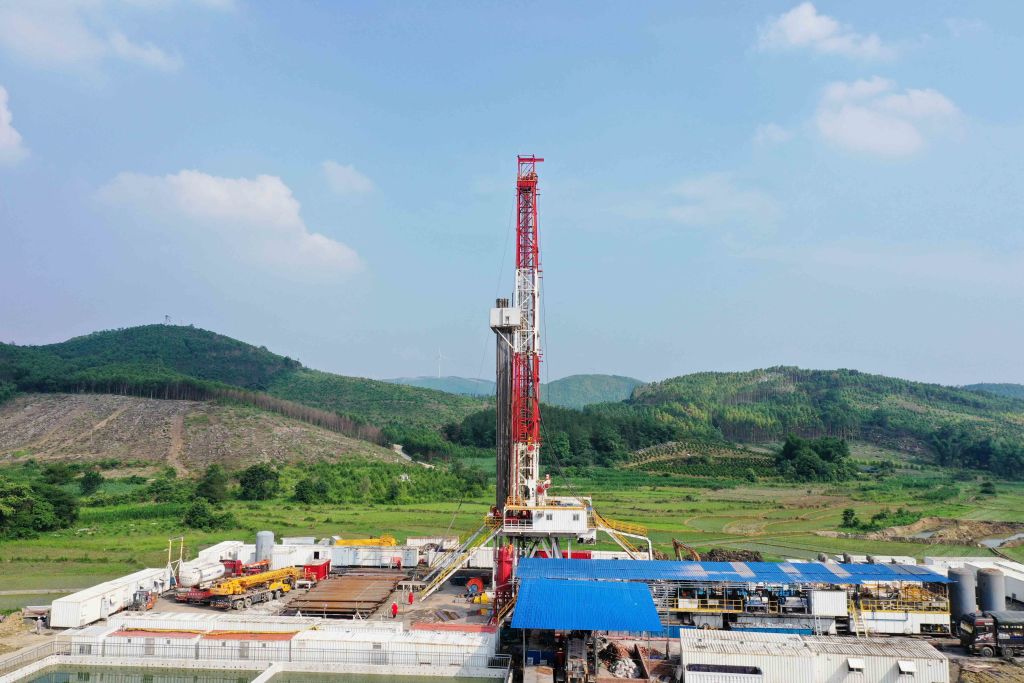While the U.S. stands at the forefront of shale-gas output, we ignore a hidden challenge — one fueled by substantial and subsidized Chinese investments, which is stifling the innovation defining American prowess in this critical sector.
President Biden’s 2024 budget includes more than $210 billion for federal research and development, the largest commitment ever, with more than half going to basic and applied research to rectify market failures and spur innovation. Yet the impact of foreign investments on the U.S. economy, environment, security and that very innovation, remains poorly understood.
The technology to extract shale-gas originated during the Civil War, and over the decades, technological advances continued. As the U.S. grapples with challenges to maintain leadership in shale-gas technology, we must address the concerning implications of Chinese investment in this sector for American innovation. These implications extend beyond economic considerations, reaching into realms of national security, trade, employment and environmental protection.
China, the world’s largest energy consumer, has strategically targeted the U.S. shale-gas sector for investments. Despite having technically-recoverable shale-gas reserves surpassing the U.S., China’s high extraction costs render its resources economically unrecoverable. The country instead relies on imports for about half of its consumption. The Chinese government, driven by different technological needs, has become the largest foreign investor in the U.S. shale-gas sector, mostly for exports to China.
My recent NSF-funded research analyzed upstream, midstream and downstream sectors of U.S. shale gas, comparing data from pre-Chinese (2000-2008) and post-Chinese (2009-2018) investment periods. I examined effects of this investment on environmentally-friendly technology, the resilience of U.S. small- and medium-sized enterprises as pioneers of energy innovation and major employers, and broader implications for U.S. national security, including energy self-sufficiency and technology leadership.
I found that Chinese-backed investors prioritize immediate and subsidized production using well-established technology and backing off from more costly, environmentally-friendly technology. The results were statistically significant across almost every technology affecting water, air and land. This strategic shift alters technology trajectories and assumptions of clean-energy development; it also contributes to concerning rises in methane pollution from shale gas and a decline in innovation from small- and medium-sized enterprises, which have historically served as the backbone of American ingenuity.
Many believe that Chinese investment fosters innovation in shale-gas, but the data indicate that China remains the primary beneficiary, not U.S. enterprises or communities. Many believe that the U.S. leads shale-gas innovation in green technology, starkly contrasting the overwhelming evidence highlighting China’s dominance. My findings underscore a pivotal shift in the dominance of green-patent areas, with filing proportions overwhelmingly favoring China’s geological terrain and import needs.
Furthermore, the limited impact of increased federal regulation on greenhouse-gas emissions following Chinese investments provides cause for concern. As geopolitical tensions evolve between the U.S. and China, we should scrutinize the implications of foreign investment to safeguard our national interests, technological leadership and promotion of sustainable development in line with our energy goals. The Security and Exchange Commission’s new rules on companies’ disclosing and managing consistent, comparable and reliable information about the financial effects of climate-related risks fall short in this regard.
In the quest for energy security and innovation, we need to navigate more effectively the complexities of our global partnerships. Policymakers should consider the multifaceted impacts of foreign investments, especially in critical sectors like shale gas. These impacts include effects on our national priorities, and small and medium-sized businesses.
Self-reporting may provide misleading information across brief time periods over which technologies rarely evolve. Here, self-reporting failed to capture how foreign investments affected emissions and communities over a decade.
Decisionmakers should pursue nuanced approaches that balance economic partnerships with imperatives of safeguarding our nation’s innovation, security, and commitment to sustainable energy development. Along with money for innovation, we need policies to ensure that foreign interests do not compromise U.S. innovation and security to change irrevocably our promised future.
Usha Haley is W. Frank Barton Distinguished Chair in International Business, Kansas Faculty of Distinction, and professor of management at the Barton School of Business at Wichita State University. She is also director of the Center for International Business Advancement and chair of the World Trade Council of Wichita.
